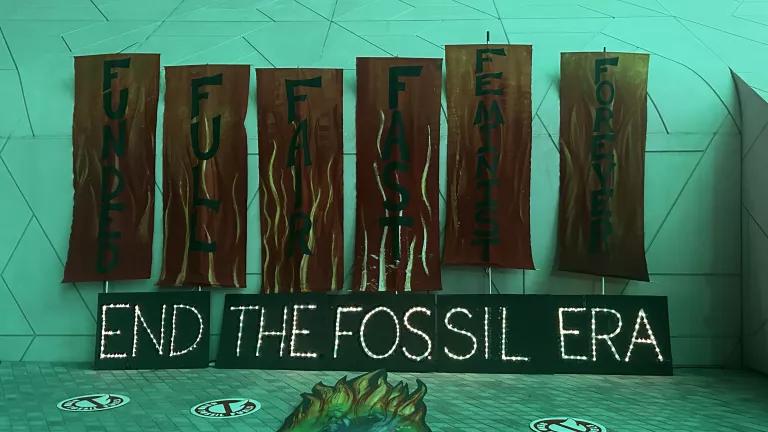
Counsel reviewing testimony
DTE Energy filed a long-term energy plan back in March outlining a vision for meeting its customers’ energy needs for the next 20 years. In August, participants in the case had their chance to respond with testimony evaluating the plan. The result was a long list of issues critiquing the process, the inputs, and the final plan.
DTE’s Plan Undervalues Energy Efficiency and Renewables
In order to achieve clean, affordable, and reliable energy, resources like energy efficiency and renewable energy must be optimized. Unfortunately, DTE repeatedly shortchanged the value of energy efficiency and renewables throughout its analysis. Our testimony unpacks how.
For energy efficiency, they did this by:
- Incorporating all the costs, but not all the benefits
- Overestimating administrative costs
- Using average rather than marginal line losses
- Overestimating the amount of efficiency embedded in their forecast
- Failing to optimize efficiency programs and measure costs
Those errors combined to bias the utility in favor of lower levels of efficiency. When our expert corrected DTE’s errors, it was clear that the 2.00% energy efficiency savings level was the least cost option under all scenarios versus the 1.75% level DTE chose.
For renewables, issues included:
- Using excessive near-term costs for solar generation
- Modeling solar resources for a fixed-tilt system even though they said that they used a single-axis tracking system
- Using a report to claim that Michigan’s power system would be very fragile making it challenging to meet its renewable energy objectives
- Refusing to competitively bid out for resources from third parties meaning no other renewable developers had the opportunity to offer up potentially more cost-effective projects
Collectively, these issues work against finding the right amount and timing of renewables development.
DTE Refuses to Meaningfully Explore Earlier Retirement of Dirty Coal Units
DTE plans to achieve its goal of 80 percent carbon reduction by 2040 in large part through retiring its coal units. It’s a promising and important goal, and yet they chose not to devote sufficient analytical resources to evaluating all retirement dates for existing coal units. For the Belle River plant, the retirement sensitivities mischaracterized the costs and benefits of continuing to operate its units, which showed a clear bias toward ensuring it continued to operate through 2029 and 2030. Additionally, they completely ignored evaluation of their Monroe plant, a whopping 3,200 MW of the utility’s own capacity. DTE must conduct comprehensive economic assessments of alternative retirement dates for both Belle River and Monroe to do business well, let alone to reach their big carbon reduction goals.
The Plan was Full of Errors, Lacked Transparency, and Ended With DTE Just Picking What They Wanted
One of our experts previously worked for the company that developed a software model DTE used for a portion of its planning, Strategist. Even so, he was unable to understand DTE’s complete process due to errors, lack of transparency, and forced in elements. One error included a large discrepancy between how much voluntary green pricing DTE said they were assuming and how much was actually found in the model. This then threw off all the surrounding optimization. Ultimately, it may not have mattered since DTE ended up admitting that “…for the proposed course of action pathways all resources identified were forced in manually to Strategist.” At its core, long term energy planning is a learning exercise meant to thoughtfully guide a utility’s decisions. Which then begs the question, how much could DTE possibly learn if they forced the result? And does this even count as a completed long-term energy plan?
Energy Decisions Impact Health
Finally, we had two experts discuss health implications. As mentioned earlier, DTE’s plan proposes to keep a sizable amount of coal generation online between now and 2040. DTE’s coal units emit air pollution that scientific studies have conclusively shown causes serious health issues and worsens the climate crisis. This means any reduction in air pollution emissions from these plants (including earlier coal plant retirements) would lead to reductions in adverse health effects. Despite the vast and far-reaching implications that DTE’s energy decisions have on the health, safety, and wellbeing of families across Michigan, these impacts have not been analyzed.
Critique Because We Care
Our concerns and critiques are many, but it’s because the law requires and DTE customers deserve a rigorous process. With DTE’s last plan approved under the previous, less stringent law and Consumers’ plan settled earlier this year, this case will be the first real long-term plan to set precedent for the standards expected from a utility. Our testimony adds to the chorus of intervenors ranging from community groups, cities, businesses, and environmental organizations, confirming that DTE’s plan falls substantially and regrettably short of our and the state's standards.
NRDC is a joint intervenor with Michigan Environmental Council and Sierra Club represented by Olson, Bzdok & Howard and Earthjustice.




